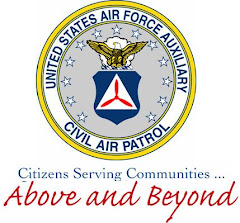
Deputy Commander of Cadets

College Park Composite Squadron
College Park, Md. –Cadets Orville “Bo” Saunders and Anthony Albanese of the College Park Composite recently received the General Billy Mitchell Award. Squadron commander Capt. Jonathan Neumann and Group III commander Lt. Col. Wes LaPre presented the awards at a ceremony at the Hap Arnold Center, home of the College Park Squadron.
The Mitchell Award is the second milestone in the CAP cadet program and is earned after completing the first eight achievements. The award honors the late Brig. Gen. Billy Mitchell, aviation pioneer, advocate and staunch supporter of an independent Air Force for America. Earning the award marks the end of the enlisted phase of the cadet program and the beginning of the officer phase.
Cadets earning the Mitchell Award receive the grade of Cadet Second Lieutenant. In addition, recipients can enter the U.S. Air Force, Air National Guard, Air Force Reserve or U.S. Coast Guard at the advance pay grade of E-3 (Airman First Class).
To earn this award, the cadets successfully passed a combined leadership and aerospace exam, a physical fitness test and a uniform inspection. They also directed moral leadership discussions, mentored other cadets, attended squadron activities and a CAP encampment, and passed a board of review.
Albanese, a member since October of 2004, recently earned his solo wings. He has attended three encampments serving as staff during the last two events. Saunders joined CAP in the fall of 2004. He has participated in Honor Guard activities and has participated in two encampments including this summer where he served as Command Chief. Soon to be a senior in high school, Saunders is currently working on his scanner rating for CAP.











 (
(




